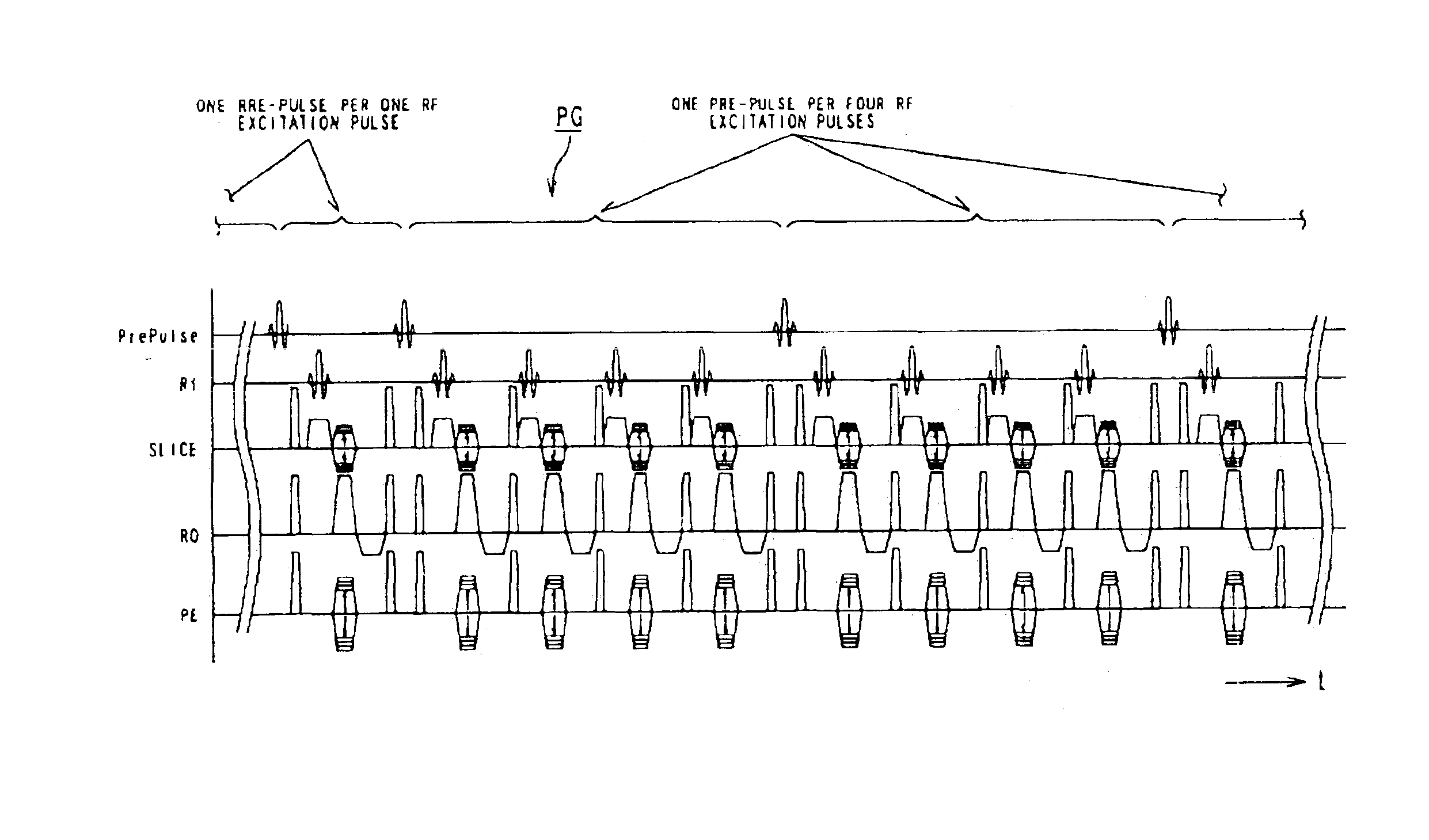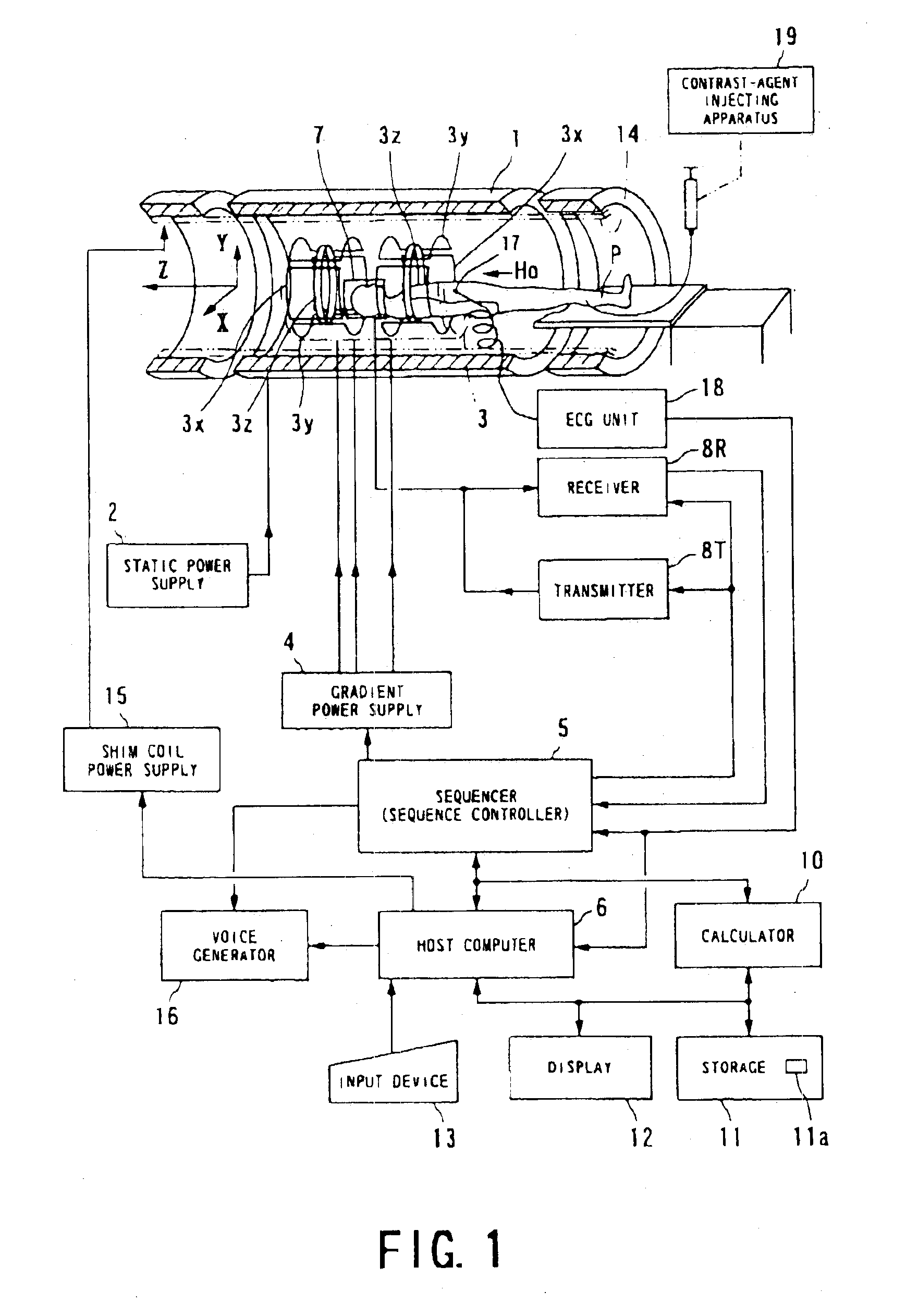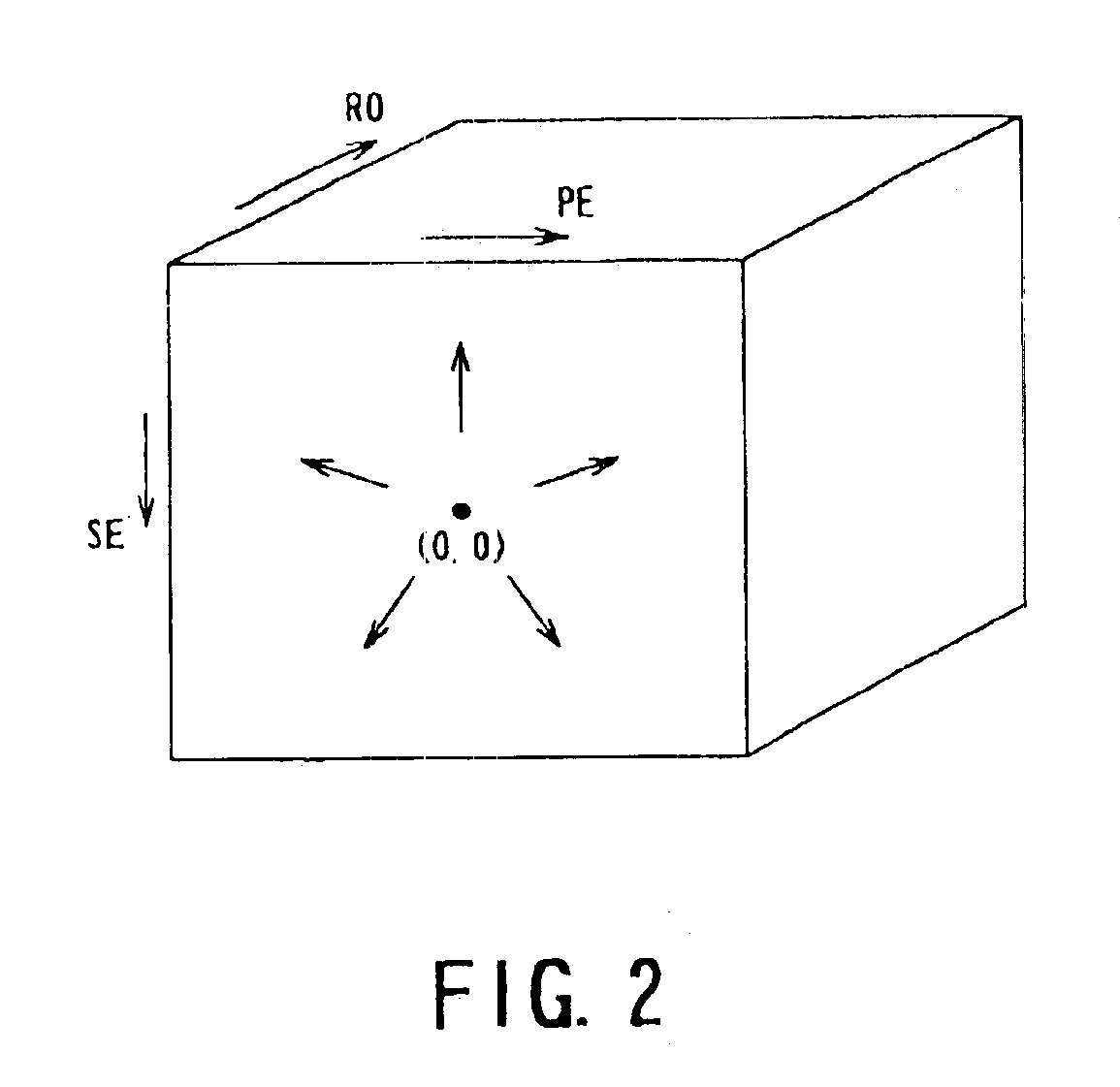MR imaging system and data acquisition method
a data acquisition and imaging system technology, applied in the field of magnetic resonance imaging, can solve the problem of limited scanning time and achieve the effect of high temporal resolution
- Summary
- Abstract
- Description
- Claims
- Application Information
AI Technical Summary
Benefits of technology
Problems solved by technology
Method used
Image
Examples
Embodiment Construction
[0027]Hereinafter, with reference to FIGS. 1 to 5, an embodiment of the present invention will now be described.
[0028]A magnetic resonance imaging (MRI) system used in this embodiment is outlined in FIG. 1.
[0029]The magnetic resonance imaging system comprises a patient couch on which a patient (object to be examined) P lies down on its couch top, static field generating components for generating a static magnetic field, gradient generating components for appending positional information to the static magnetic field, transmitting / receiving components for transmitting and receiving radio-frequency signals, controlling and calculating components responsible for control of the whole system and reconstruction of images, electrocardiographing components for acquiring an ECG signal which is a representative signal indicative of the cardiac temporal phase of a patient, and breath-hold instructing components for instructing the patient to temporarily hold his or her breath.
[0030]The static f...
PUM
 Login to View More
Login to View More Abstract
Description
Claims
Application Information
 Login to View More
Login to View More - R&D
- Intellectual Property
- Life Sciences
- Materials
- Tech Scout
- Unparalleled Data Quality
- Higher Quality Content
- 60% Fewer Hallucinations
Browse by: Latest US Patents, China's latest patents, Technical Efficacy Thesaurus, Application Domain, Technology Topic, Popular Technical Reports.
© 2025 PatSnap. All rights reserved.Legal|Privacy policy|Modern Slavery Act Transparency Statement|Sitemap|About US| Contact US: help@patsnap.com



